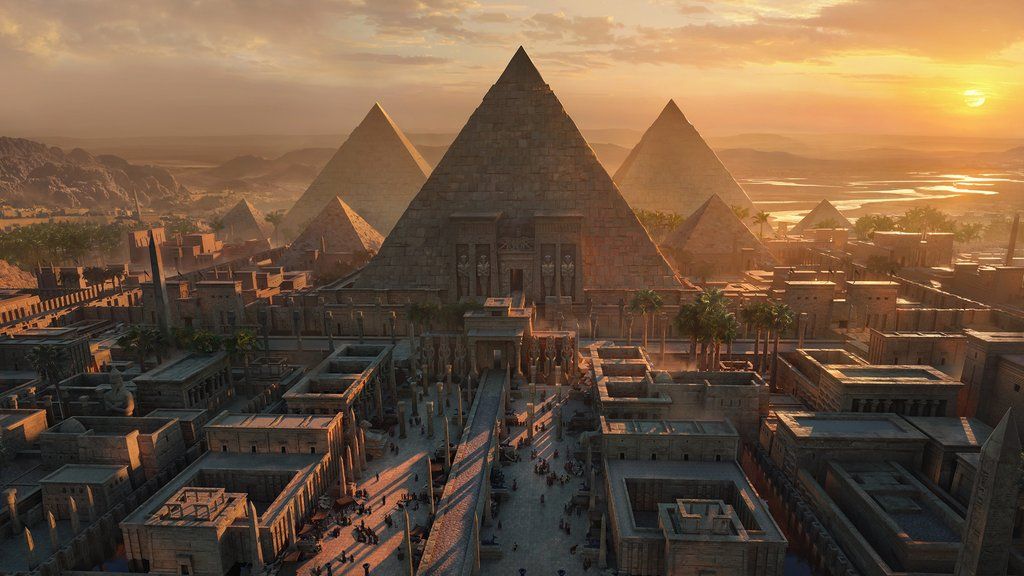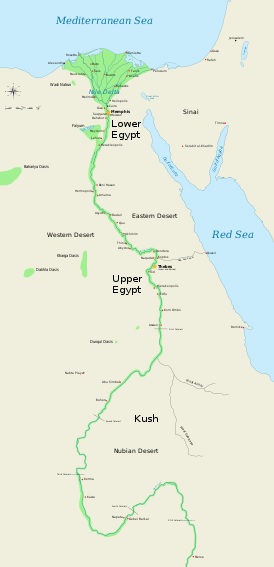Difference between revisions of "Egyptian History"
Tao alexis (talk | contribs) |
Tao alexis (talk | contribs) |
||
| Line 9: | Line 9: | ||
Religion played a central role. The pharoah was considered a divine figure, who in fact received messages from the [[Gods (sage study)|Gods]] (a similar thing was taking place in [[Mesopotamian History|Mesopotamia]]). Temples and religious practices reacted to a [[Polytheism (technology)|polytheistic]] enlightenment that followed. Yet the will of man contended against the will of the new Gods, so that an era of unrest occurred that laid the foundation for the '''Old Kingdom'''. | Religion played a central role. The pharoah was considered a divine figure, who in fact received messages from the [[Gods (sage study)|Gods]] (a similar thing was taking place in [[Mesopotamian History|Mesopotamia]]). Temples and religious practices reacted to a [[Polytheism (technology)|polytheistic]] enlightenment that followed. Yet the will of man contended against the will of the new Gods, so that an era of unrest occurred that laid the foundation for the '''Old Kingdom'''. | ||
| + | |||
| + | == Old Kingdom == | ||
Revision as of 19:02, 20 August 2023
Egyptian History is defined by the Nile Valley, not occupied by man until after the last Ice Age. The Sahara plateau, formerly an enormous grassland, began to dry and suffer from desertification, driving humans and animals from northern Africa toward the Mediterranean coast or eastward to the banks of the Nile. In the Paleolithic, these lived on high cliffs above the valley; but their successors, the agriculturalists of the Neolithic, descended to the valley floor to plant their crops. The ebb and flow of the Nile each season would flood the land with rich deposits of mud, making it a rich land for agriculture; thus the pattern of the river would dominate every part of Egyptian culture.
Contents
By that time, there were perhaps 40 agricultural communities, strung together like beads along the ribbon of the Nile River north of the First Cataract. By about 5000 BC, Egypt had been unified to some extent into two kingdoms: one in the delta (Lower Egypt) and one in the valley (Upper Egypt). The period saw the emergence of the many cultural, social and technological foundations that would later define the Ancient Egyptian civilisation. After many centuries of warfare in the Chalcolithic period, the two kingdoms were unified under King Menes, also called Narmer, who established Memphis as his capital. Thus was established the 1st Dynasty of Egypt.
Early Dynastic Period
Lasting from 3200 to 2800 BC, the period represents the dawn of the pharaonic civilisation. Its rulers established a centralised state, solidifying the power of the pharoahs while establishing a bureaucratic system to manage the affairs of the state and its regional governors and officials. Heiroglyphic writing flourished, while the pharoahs built elaborate royal tombs for themselves. Agriculture flourished as the backbone of the economy, paving the way for trade and artisanship.
Religion played a central role. The pharoah was considered a divine figure, who in fact received messages from the Gods (a similar thing was taking place in Mesopotamia). Temples and religious practices reacted to a polytheistic enlightenment that followed. Yet the will of man contended against the will of the new Gods, so that an era of unrest occurred that laid the foundation for the Old Kingdom.

